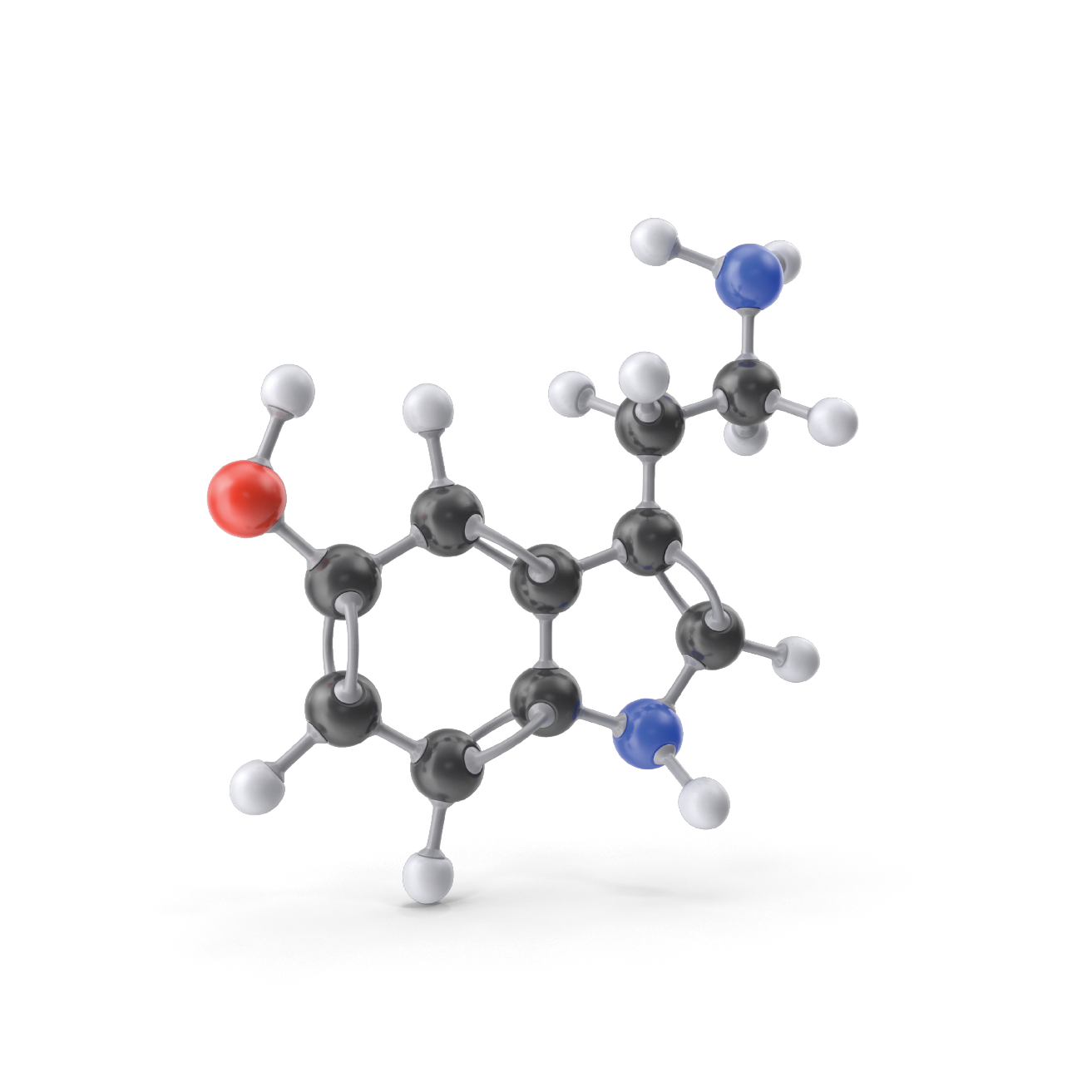Camellia sinensis (L-Theanine)
C. sinensis is a shrub native to southeast Asia and is the plant used to make the second most popular drink in the world, green tea. It provides the Herbalomic™, epigenetic, and antioxidant attributes of green tea due to its high levels of the compound epi-gallo catechin gallate (EGCG). These benefits provided by C. sinensis include protecting the body from reactive oxygen species (ROS), preventing and eliminating dysfunctional cells that may lead to cancer, and protecting neurological health.9
Ashwagandha
In a clinical trial, ashwagandha was shown to statistically reduce feelings of stress and anxiety, as well as reduce levels of cortisol upon first waking up. These effects likely occur through modulation of the HPA axis.10
Sceletium tortuosum (Zembrin®)
S. tortuosum is a succulent plant native to South Africa and has traditionally been used as a mood elevator. Preliminary clinical studies show it can inhibit the reuptake of 5-hydroxytryptamine (5-HT), also known as serotonin, and inhibit PDE4 enzyme activity. Together, these effects have been reported to provide synergistic effects in boosting mood and relieving stress.11
Ziziphus spinosa
Z. spinosa is a small shrub that has been used in traditional Chinese medicine as a sedative. Current research shows that it has powerful benefits for insomnia. It works by activating the GABAergic and serotoninergic systems to help calm the nervous system and induce restful sleep.12
Rhodiola rosea (Rosavin, Salidroside)
R. rosea is a promising adaptogen that exerts its effects through various pathways involving the HPA axis, the sympathetic nervous system, and molecular pathways related to stress response. As an adrenal tonic, it manages a healthy response to daily environmental stresses and supports healthy immune system function while promoting a balanced mood. With little to no side effects, it is a great option for supporting mood and energy.13,14
Gamma-aminobutyric acid (GABA)
GABA is an inhibitory neurotransmitter known to help the body balance the excitatory brain processes. By preventing overwhelming stress responses, it helps the body maintain appropriate stress levels and promotes a balanced mood.15
S-Adenosyl-L-Methionine Tosylate (SAMe)
SAMe is a critical molecule known as the ‘universal methyl group donor.’ One of the three major metabolic pathways that it stimulates is transmethylation, a reaction in which a methyl group, composed of one carbon and three hydrogen atoms, is transferred from the SAMe molecule to a target molecule. This reaction helps manage the levels of neurotransmitters such as serotonin, dopamine, and norepinephrine, and melatonin. Ensuring adequate levels of SAMe are available for these reactions supports proper levels of these neurotransmitters, reducing stress and balancing mood.16,17
Griffonia simplicifolia
G. simplicifolia is an herb bearing nature’s 5-hydroxytryptophan (5-HTP), a precursor to serotonin. It is the plant used most often for commercial extraction of 5-HTP. The components of G. simplicifolia, primarily 5-HTP, interact with tryptophan hydroxylase (TPH) enzymes involved in serotonin production. Because of this, G. simplicifolia supplementation may influence the expression of TPH genes and activity of TPH enzymes, potentially supporting serotonin levels despite mutations present in TPH genes.18,19
Dehydroepiandrosterone (DHEA)
DHEA is the building block of estrogen and testosterone, and is synthesized in the adrenal glands, gonads, and brain. Changes in steroid hormones have been shown to impact mood, sleep, energy, and stress levels. By providing the proper building blocks for these hormones to be made, CalmGenic offers a multifaceted approach to supporting mood, stress, energy, and sleep.20
Mucuna pruriens (L-DOPA)
M. pruriens is a legume native to Asia and Africa, and is a natural concentrated source of the levodopa (L-DOPA) molecule, the precursor to the neurotransmitter, dopamine. Supplementing with M. pruriens instead of pure L-DOPA has shown promising results in modulating the nervous system without the harsh side effects that can occur otherwise.21
L-Taurine
L-Taurine is an amino acid necessary for multiple functions in the body. It has recently been shown to act on GABA receptors, which can help soothe an overactive nervous system. Taurine supplementation has also been reported to improve a depressed mood.22
Melissa officinalis
M. officinalis, an herb also known as lemon balm, calms the nervous system by modulating GABA receptors and increasing the available levels of GABA by inhibiting the activity of GABA-transaminase enzymes that break down GABA molecules. Additionally, the herb’s neuroprotective effects may involve pathways related to brain-derived neurotrophic factor (BDNF), a gene associated with neuronal growth and maintenance.23–25
Tryptophan
Tryptophan is an essential amino acid and a precursor to the neurotransmitter, serotonin. Serotonin helps the body maintain a positive feeling and good mood. Tryptophan can also improve sleep quality.26
Beta-Alanyl-L-Histidine
Beta-alanyl-l-histidine, commonly known as carnosine, is a dipeptide of the amino acids beta-alanine and histidine, which is highly concentrated in the brain. As a neuroprotectant, it supports healthy brain aging and neurohormone function.27
Hypericum perforatum
H. perforatum, widely known as St. John’s Wort, is an herb long recognized for its ability to support a positive mood and healthy neurological function. The rigorous studies by the German Commission E have cited its ability to help optimize serotonin uptake processes, thereby promoting a balanced mood.28
Cordyceps militaris
C. militaris is a species of fungus that has recently received attention for its wide variety of health benefits, such as boosting longevity, exercise performance, and mood. It produces a compound known as cordycepin, which is believed to play a role in its ability to modulate serotonin and dopamine levels.29
Ocimum sanctum
O. sanctum, also known as Holy Basil, is a traditional medicinal herb containing the phytonutrients ocimumoside A and B. These unique phytonutrients have been shown to protect the brain and nervous system as a whole, as well as reduce stress.30,31




